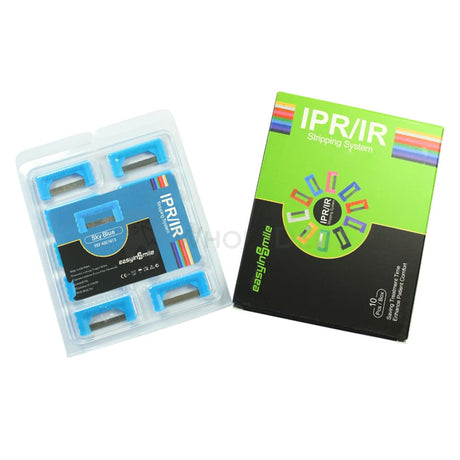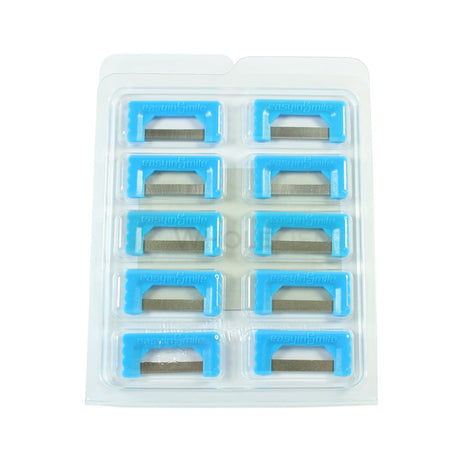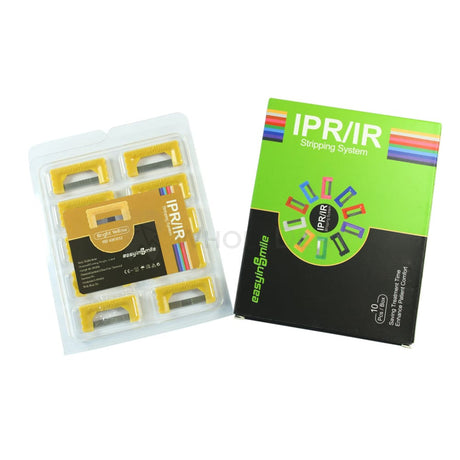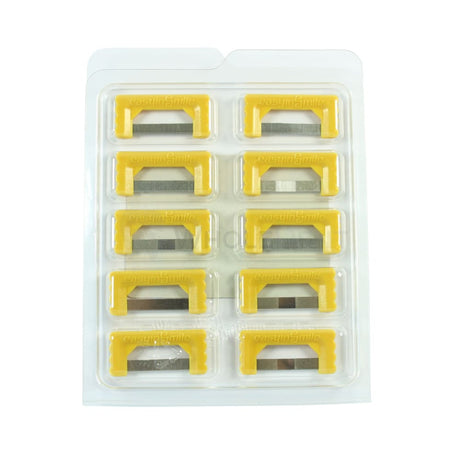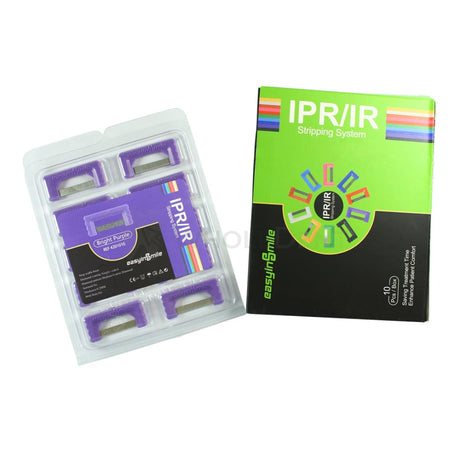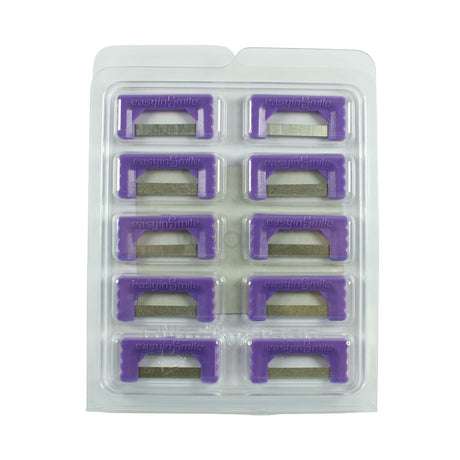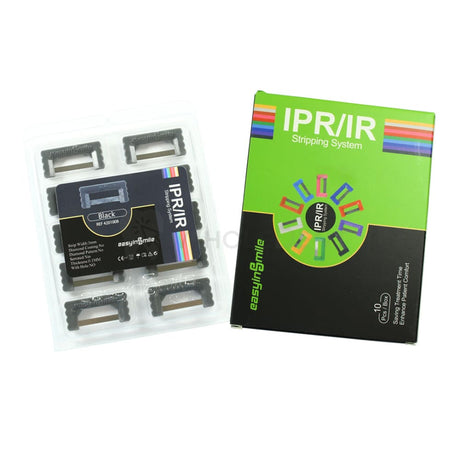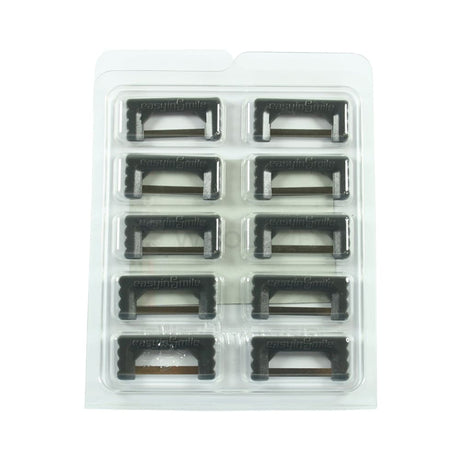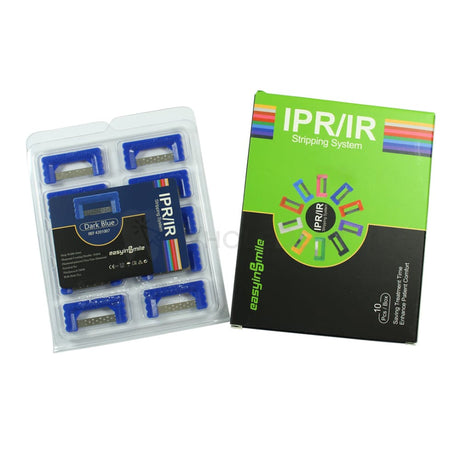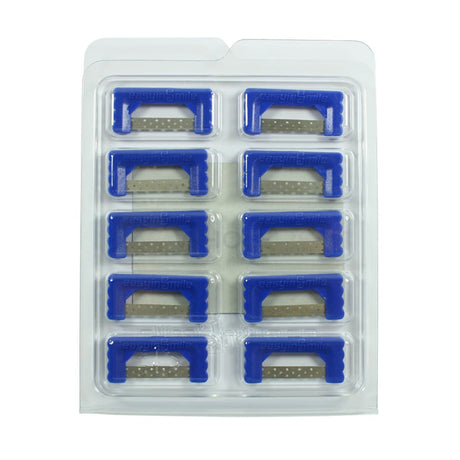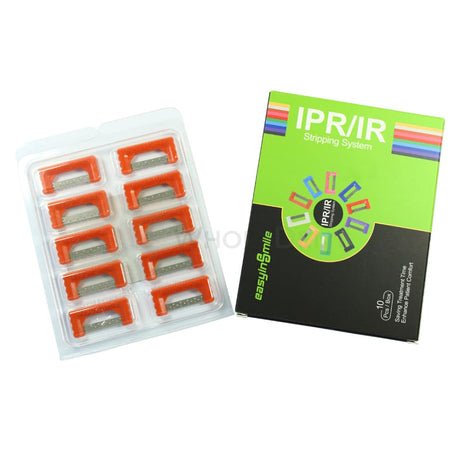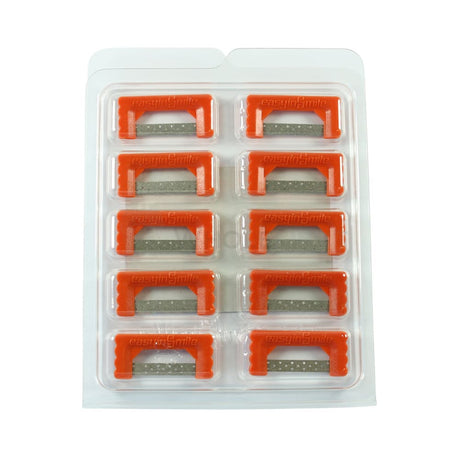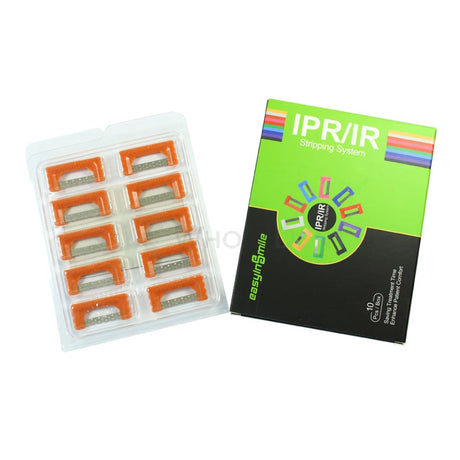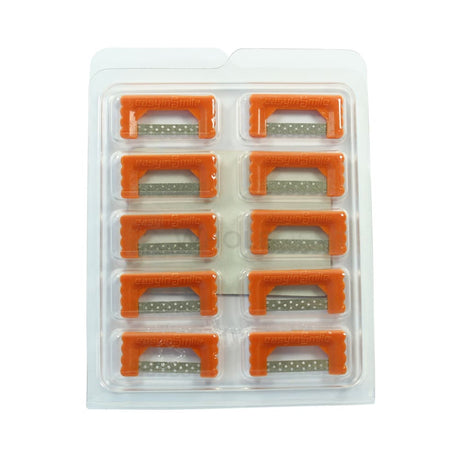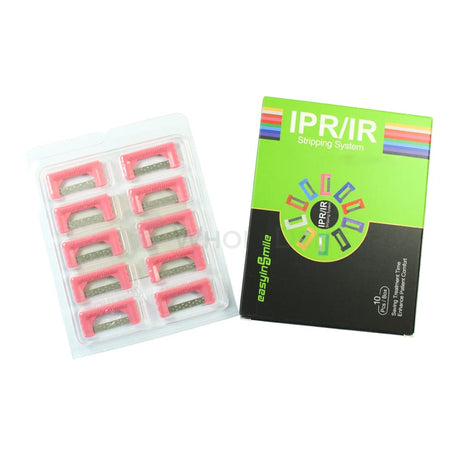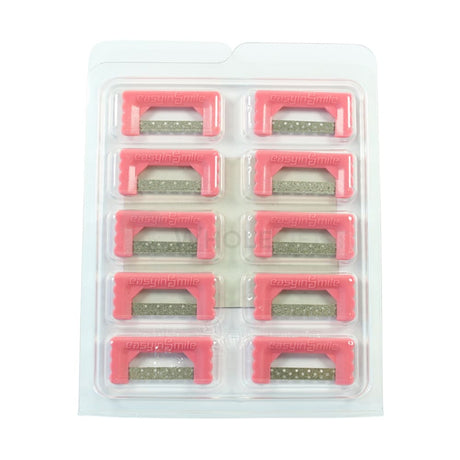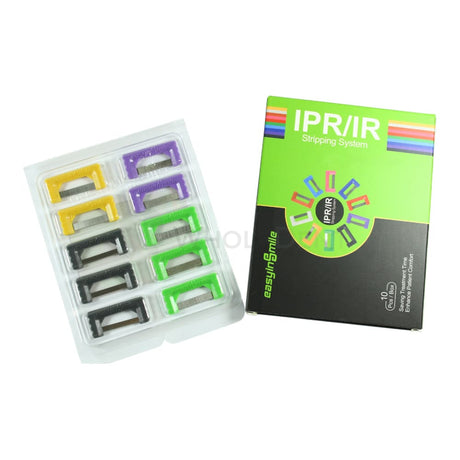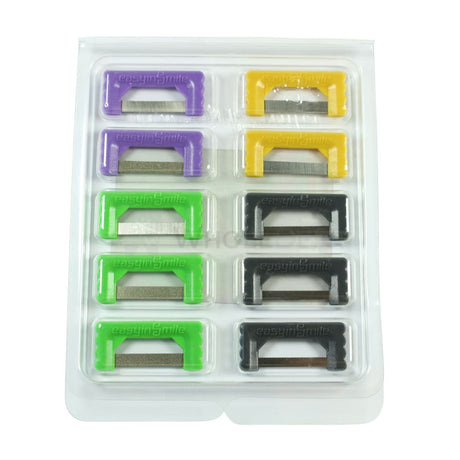- $299.90 as low as $269.91Unit price /Unavailable
- $85.00 as low as $76.50Unit price /Unavailable
DSI Interproximal Enamel Reduction IPR Strip
$17.90 as low as $16.11Unit price /UnavailableContacEZ Rainbow Set Assorted IPR Strips
$291.00 as low as $261.90Unit price /Unavailable- $25.90 as low as $23.31Unit price /Unavailable
DSI Coarse Grit Fully Diamond Coated Separator IPR Flexible Disc Ø22mm T0.29mm
$19.90 as low as $17.91Unit price /UnavailableDSI Fine Grit Fully Diamond Coated Separator IPR Flexible Disc Ø22mm T0.19mm
$19.90 as low as $17.91Unit price /UnavailableEasyinSmile Single Sided Bright Green IPR Strips Set
$45.00 as low as $40.50Unit price /UnavailableMDT Serrated Saw One Sided Finishing Strips - 10pcs
$99.90 as low as $89.91Unit price /UnavailableMDT Perforated Single-Sided Diamond Finishing Strips - 10pcs
$99.90 as low as $89.91Unit price /UnavailableMDT Perforated Double-Sided Diamond Finishing Strips - 10pcs
$99.90 as low as $89.91Unit price /UnavailableMDT Diamond Coated Double Sided Super Flex Disc
$21.00 as low as $18.90Unit price /UnavailableMDT Fine Grit Diamond Coated Double Sided Open Mesh Super Flex Disc Ø22mm T0.3mm
$29.00 as low as $26.10Unit price /UnavailableMDT Extra Fine Grit Diamond Coated Double Sided Super Flex Disc Ø22mm T0.2mm
$21.00 as low as $18.90Unit price /UnavailableMDT Extra Fine Grit Diamond Coated Double Sided Open Mesh Super Flex Disc T0.2mm
$21.00 as low as $18.90Unit price /UnavailableMDT Extra Fine Grit Diamond Coated Double Sided Open Mesh Super Flex Disc T0.2mm
$29.00 as low as $26.10Unit price /UnavailableMDT Fine Grit Diamond Coated Double Sided Disc Ø22mm T0.3mm
$21.00 as low as $18.90Unit price /UnavailableEasyinSmile Double Sided White IPR Strips Set
$45.00 as low as $40.50Unit price /UnavailableEasyinSmile Single Sided Sky Blue IPR Strips Set
$45.00 as low as $40.50Unit price /UnavailableEasyinSmile Double Sided Bright Yellow IPR Strips Set
$45.00 as low as $40.50Unit price /UnavailableEasyinSmile Double Sided Bright Purple IPR Strips Set
$45.00 as low as $40.50Unit price /UnavailableEasyinSmile Serrated Black IPR Strips Set
$45.00 as low as $40.50Unit price /UnavailableEasyinSmile Perforated Dark Blue IPR Strips Set
$45.00 as low as $40.50Unit price /UnavailableEasyinSmile Perforated Red IPR Strips Set
$45.00 as low as $40.50Unit price /UnavailableEasyinSmile Perforated Bright Orange IPR Strips Set
$45.00 as low as $40.50Unit price /UnavailableEasyinSmile Perforated Bright Pink IPR Strips Set
$45.00 as low as $40.50Unit price /UnavailableEasyinsmile IPR Diamond Strips Kit
$45.00 as low as $40.50Unit price /UnavailableDSI Fine Grit Diamond Coated Separator IPR Flexible Disc Ø22mm
$19.90 as low as $17.91Unit price /UnavailableDSI Coarse Grit Diamond Coated Separator IPR Flexible Disc With Slots T5 Ø22mm T0.29mm
$19.90 as low as $17.91Unit price /UnavailableDSI Fine Grit Diamond Coated On the Edges IPR Flexible Disc Ø22mm T0.10mm
$19.90 as low as $17.91Unit price /UnavailableDSI Coarse Grit Diamond Coated Separator IPR Flexible Disc With Oval Slots Ø22mm T0.29mm
$19.90 as low as $17.91Unit price /UnavailableDSI Coarse Grit Diamond Coated Separator IPR Flexible Disc With Dot T10 Holes Ø22mm T0.29mm
$19.90 as low as $17.91Unit price /UnavailableDSI Coarse Grit Diamond Coated Separator IPR Flexible Disc With 8 Dot Holes Ø22mm T0.29mm
$19.90 as low as $17.91Unit price /Unavailable- $19.90 as low as $17.91Unit price /Unavailable
DSI Coarse Single Sided Grit Diamond Coated Separator IPR Flexible Disc With Holes Ø22mm
$19.90 as low as $17.91Unit price /UnavailableDSI Coarse Grit Diamond Coated Separator IPR Flexible Disc With 6 Dot Holes T6 Ø22mm T0.29mm
$19.90 as low as $17.91Unit price /Unavailable- $19.90 as low as $17.91Unit price /Unavailable
- $19.90 as low as $17.91Unit price /Unavailable
- $19.90 as low as $17.91Unit price /Unavailable
- $19.90 as low as $17.91Unit price /Unavailable
DSI Fine Grit Diamond Coated Separator IPR Flexible Disc With Straight Radial Slots T4 Ø22mm T0.19mm
$19.90 as low as $17.91Unit price /UnavailableDSI Fine Grit Diamond Coated Separator IPR Flexible Disc Ø22mm
$19.90 as low as $17.91Unit price /UnavailableDSI Coarse Grit Spiral Diamond Coated Separator IPR Flexible Disc Ø22mm T0.29mm
$19.90 as low as $17.91Unit price /UnavailableDSI Fine Single Sided Grit Diamond Coated Separator IPR Flexible Disc Ø19mm
$19.90 as low as $17.91Unit price /UnavailableDSI Coarse Grit Diamond Coated Separator IPR Flexible Beehive Disc Ø22mm
$19.90 as low as $17.91Unit price /UnavailableDSI Coarse Grit Diamond Coated Separator IPR Flexible Disc With Dot T9 Holes Ø22mm T0.29mm
$19.90 as low as $17.91Unit price /UnavailableDSI Coarse Grit Fully Diamond Coated Separator IPR Flexible Disc With 6 Dot Holes Ø22mm T0.29mm
$19.90 as low as $17.91Unit price /UnavailableDSI Coarse Grit Diamond Coated Separator IPR Flexible Saw Disc Ø22mm
$19.90 as low as $17.91Unit price /UnavailableDSI Coarse Grit Diamond Coated On the Edges IPR Flexible Disc Ø22mm T0.29mm
$19.90 as low as $17.91Unit price /UnavailableDSI Fine Grit Single Sided Diamond Coated Separator IPR Flexible Disc Ø22mm T0.13mm
$19.90 as low as $17.91Unit price /Unavailable
FAQs
Interproximal reduction, also known as tooth stripping, can be beneficial for several reasons.
Firstly, it can improve tooth alignment. By making room between teeth, this procedure allows teeth to move to the right places, which can drastically improve a patient’s smile. Furthermore, tooth stripping can be a great alternative for extractions.
A person can receive orthodontic treatment without having to pull any of their teeth, thanks to IPR. It can also improve a person’s bite, which can positively affect their quality of life.
As discussed previously, interproximal reduction is used to create more space between teeth. In the section below, we’ll take a closer look at its significance and why it is performed in orthodontics.
- Addressing incisor protrusion. Some patients present with protruding upper incisors that extend to sit in front of the lower teeth when they bite down. Tooth stripping of these teeth can help to rectify this, restoring the person's smile.
- Preparation for other orthodontic procedures. Another reason why you might need to make space between teeth is to prepare for the insertion of braces or aligners. Instead of having to extract teeth, they can be stripped to make room for these orthodontic devices.
- Eliminating black spaces that can form between teeth. It is also used to prevent the formation of black spaces that can occur after a patient has received orthodontic treatment. By making the teeth narrower, the gums are given the space they require to expand and fill in the exposed area.
Unfortunately, like most medical procedures, IPR may come with certain side effects. It’s important to understand that when you reduce the size of a tooth, you are getting rid of healthy layers of tissue.
As a result, the patient may experience tooth sensitivity, as they have less protection. Moreover, some patients also report pain, but this generally occurs for a short time after IPR has been performed.
Tooth stripping should never be performed on candidates with poor oral hygiene, as complications could arise, resulting in damage to the teeth. You will also need to verify the amount of tooth tissue that can be removed safely prior to the commencement of the procedure to avoid permanently damaging the tooth.
While there may be temporary pain after the procedure, the procedure itself is relatively pain-free. This is because tooth enamel doesn’t have any nerve endings, so when IPR is conducted by a reliable and well-trained professional, it does not hurt.
If patients experience discomfort, local anesthesia can be used to prevent this and ensure that the procedure is entirely pain-free.





































